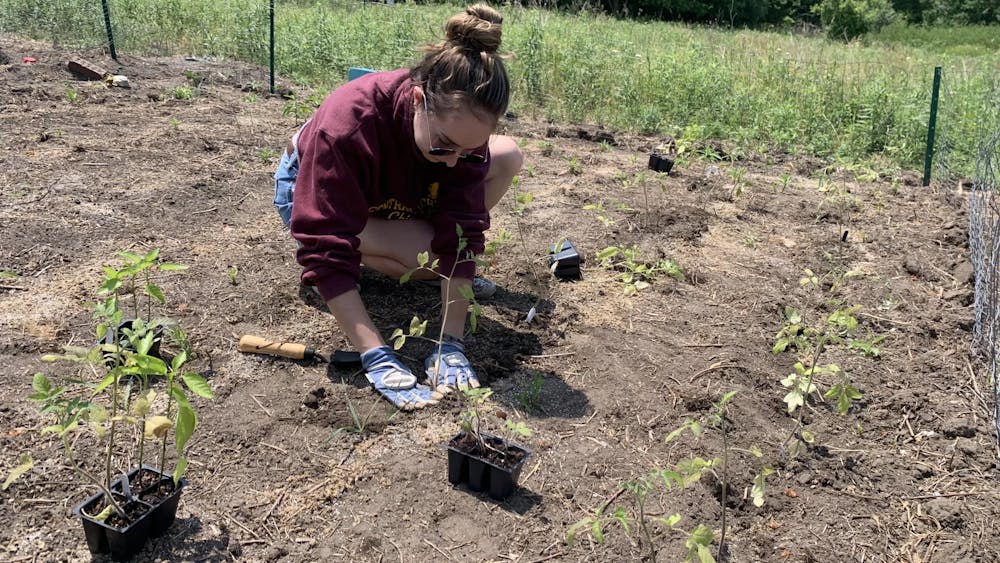Stadium turf giving teams fits
Fifty-five football games and 80 field hockey games have been played on the turf of Kelly/Shorts Stadium.
In its 11th season, the turf is not getting any better with age.
A walk across the field reveals humps and divots that could be expected on a subpar golf course — not a Division I field. There are rips and tears, and most of the white yard markers or sidelines have sunk well below the green surface.
“That turf is to the point where we are having a tough time with it,” said field hockey coach Cristy Freese. “It used to be to our advantage because other teams would have problems because it was so old. We even struggle in practice now, because the white lines have receeded more than the green part of the turf.”
With the torn and tattered turf, football has been forced to find alternative practice surfaces.
“We have practiced on the grass field more this year than ever,” said football coach Mike DeBord. “We have had a lot of injuries and if we practice on the turf a lot, it wears the players down.”
The field hockey team was supposed to host this weekend’s MAC Tournament, but given the uncertainty of the field, the home-field advantage was given to Kent State.
“We didn’t know if football was getting new turf (this season) and we would get the old turf from the stadium in a new venue,” Freese said. “We were not sure if we were going to have the new venue ready, so we passed the MAC Tournament on.”
Freese does not want to pass on the opportunity to host the tournament next season.
“It is our turn next year, and I am not going to give it up again,” she said. “If we still have the old turf, we will have the tournament in Kelly/Shorts Stadium.”
Although it is obvious that the field needs to be resurfaced, Athletics Director Herb Deromedi does not know what to replace it with.
“We have looked at the product that is offered by three companies, all of which are the rubber-based type of field or the softer type of synthetic grass,” Deromedi said. “The fields are very similar to what they have at Ford Field, Michigan’s field, and Michigan State’s indoor field.”
However, while those surfaces would aid football, field hockey could not play there.
“The Field Hockey Coaches Association has felt that that surface slows the game down too much,” he said.
Deromedi knows exactly what he wants to do with the situation.
“When we address the replacement in the stadium, then we will have to have a field that will service field hockey,” Deromedi said. “In doing so, that field will have multiple purposes. We will utilize it for camps and other teams could also use it.”
The proposed site for the new field hockey venue would be west of Lyle Bennett Outdoor Track and Soccer Complex, where the soccer team practices.
“I think we have a good plan because we have space that will allow us to use the press box that we use for track and soccer, but just work out of the west side,” Deromedi said.
In 2002, Michigan State put natural grass back in Spartan Stadium, thus leaving the field hockey team without a field.
“When the surface changed to grass, field hockey needed a new field,” said MSU Athletics Director Ron Mason. “It is better for field hockey to have their own spot where they can practice all the time, and it is nice to be able to practice where you play your games.”
So MSU devised plans for the Michigan State Field Hockey Complex. Kares Contracting of Lansing delegated the manual labor, and SRI Sports of Leander, Texas provided the surface.
“To put in the new field hockey turf and the sprinkler system, it cost about $1.1 million,” said MSU Associate Athletic Director Greg Ianni. “It took six months to design everything, and about 12 weeks to actually build.”
The FieldTurf that was put in Michigan Stadium cost $620,000. Ford Motor Company donated $46,000 for the crushed rubber on the field.
“With FieldTurf, a team can practice and play on the same field, and it is best for the players,” DeBord said. “The kind that Michigan has is the kind of turf that you can play and practice on all the time, and in my opinion it’s better than grass.”
There are two ways that money can be raised to fund the project.
“One way is as a part of the University Capital Improvement Plan, and people have been aware for three to four years about the need for replacement,” Deromedi said. “(If implemented,) the Student Athletics Fee dollars would be put toward the replacement of the turf.”
The Student Athletics Fee would allow CMU to plan for improvements to the department down the road. It would require incoming freshmen to pay a one-time $300 fee and transfer students to ante up $200.
“The fee permits CMU to set a plan where we take care of the deferred maitenance for years to come,” Deromedi said. “We can put a schedule together so when a field needs to be replaced 10 years from now, the funds will be there.”
At the Academic Senate meeting on Nov. 4, several senators acknowledged the fact that a new playing surface is needed. However, they also noted that athletics should have to save money for these type of situations just like academics does.






